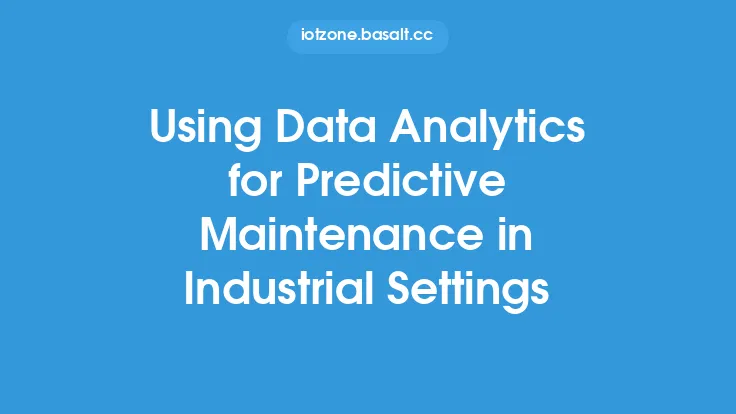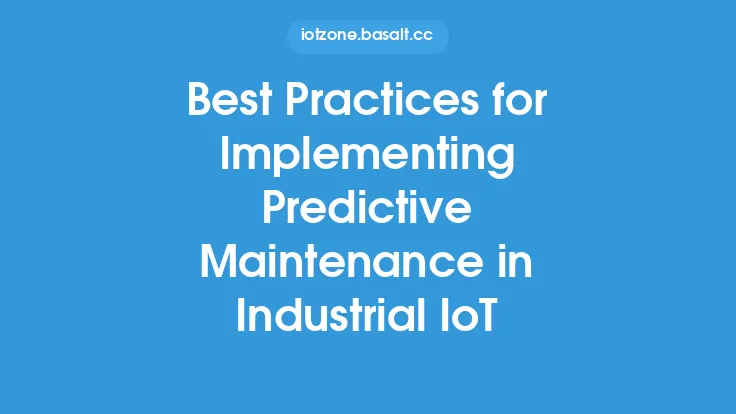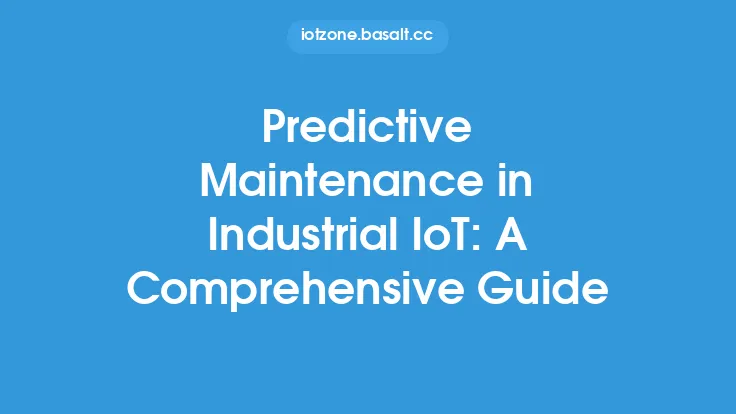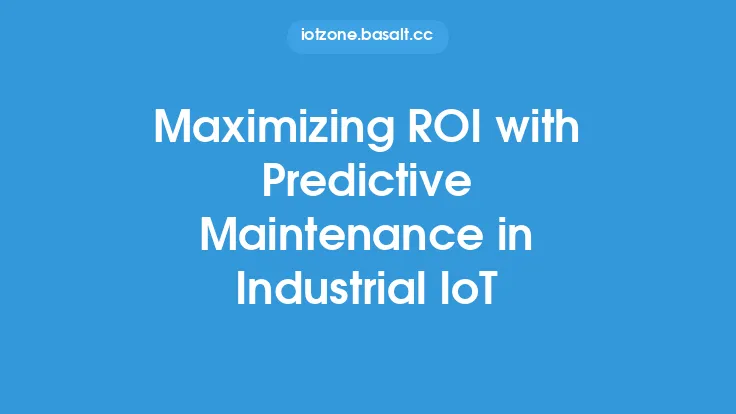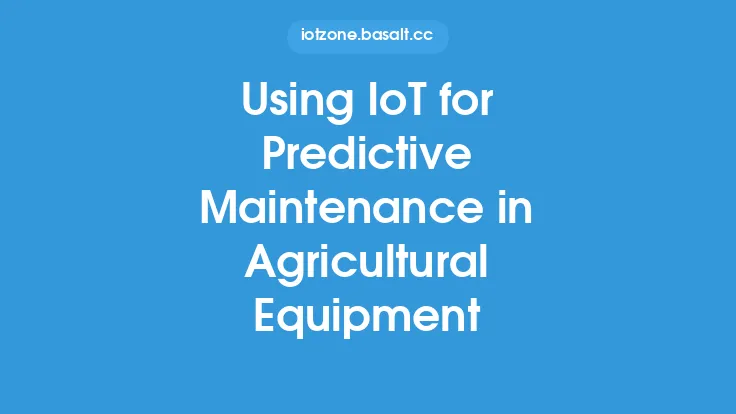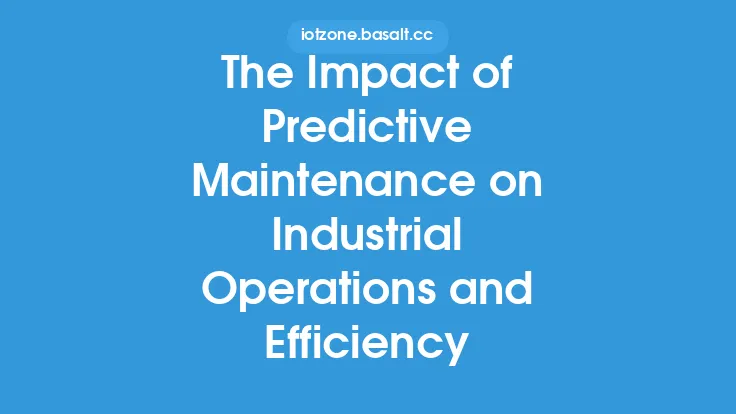The increasing complexity and interconnectedness of industrial equipment have made it essential to adopt proactive maintenance strategies to minimize downtime, reduce maintenance costs, and optimize overall equipment effectiveness. Predictive maintenance techniques have emerged as a key approach to achieving these goals, leveraging advanced technologies and data analytics to predict equipment failures and schedule maintenance activities accordingly. In this article, we will delve into the various predictive maintenance techniques used for industrial equipment, exploring their underlying principles, applications, and benefits.
Introduction to Predictive Maintenance Techniques
Predictive maintenance techniques involve using real-time data and advanced analytics to predict when equipment is likely to fail or require maintenance. This approach enables maintenance personnel to schedule maintenance activities during planned downtime, reducing the likelihood of unexpected equipment failures and associated downtime. The primary goal of predictive maintenance is to identify potential equipment failures before they occur, allowing for proactive maintenance and minimizing the risk of unplanned downtime. Predictive maintenance techniques can be broadly categorized into two main types: condition-based maintenance and predictive analytics.
Condition-Based Maintenance
Condition-based maintenance involves monitoring equipment condition in real-time to detect potential faults or anomalies. This approach uses sensors and monitoring systems to track equipment performance parameters, such as vibration, temperature, pressure, and flow rates. By analyzing these parameters, maintenance personnel can identify potential equipment failures and schedule maintenance activities accordingly. Condition-based maintenance techniques include vibration analysis, thermography, oil analysis, and performance monitoring. Vibration analysis, for example, involves using sensors to measure equipment vibration levels, which can indicate potential faults or imbalances. Thermography, on the other hand, uses infrared cameras to detect temperature anomalies, which can indicate overheating or other equipment issues.
Predictive Analytics
Predictive analytics involves using advanced statistical and machine learning algorithms to analyze equipment data and predict potential failures. This approach uses historical data, real-time data, and other relevant information to identify patterns and trends that may indicate potential equipment failures. Predictive analytics techniques include regression analysis, decision trees, random forests, and neural networks. Regression analysis, for example, involves using statistical models to identify relationships between equipment performance parameters and potential failures. Decision trees, on the other hand, involve using tree-like models to identify patterns and trends in equipment data.
Machine Learning and Artificial Intelligence
Machine learning and artificial intelligence (AI) are increasingly being used in predictive maintenance to improve the accuracy and efficiency of maintenance activities. Machine learning algorithms can be trained on equipment data to identify patterns and trends that may indicate potential failures. AI, on the other hand, can be used to analyze equipment data in real-time, providing instant alerts and notifications when potential failures are detected. Machine learning and AI can also be used to optimize maintenance schedules, reducing downtime and improving overall equipment effectiveness.
Implementation of Predictive Maintenance Techniques
Implementing predictive maintenance techniques requires a structured approach, involving several key steps. The first step involves collecting and analyzing equipment data, using sensors, monitoring systems, and other data sources. The second step involves selecting the most suitable predictive maintenance technique, based on equipment type, complexity, and maintenance requirements. The third step involves developing and implementing a predictive maintenance strategy, using the selected technique and equipment data. The final step involves continuously monitoring and evaluating the effectiveness of the predictive maintenance strategy, making adjustments and improvements as needed.
Benefits of Predictive Maintenance Techniques
The benefits of predictive maintenance techniques are numerous and well-documented. By predicting equipment failures and scheduling maintenance activities accordingly, predictive maintenance can reduce downtime, minimize maintenance costs, and optimize overall equipment effectiveness. Predictive maintenance can also improve equipment reliability, reduce the risk of accidents and injuries, and enhance overall industrial operations and efficiency. Additionally, predictive maintenance can provide valuable insights into equipment performance and maintenance requirements, enabling data-driven decision-making and continuous improvement.
Challenges and Limitations
Despite the benefits of predictive maintenance techniques, there are several challenges and limitations that must be addressed. One of the primary challenges involves collecting and analyzing high-quality equipment data, which can be time-consuming and resource-intensive. Another challenge involves selecting the most suitable predictive maintenance technique, which can depend on equipment type, complexity, and maintenance requirements. Additionally, predictive maintenance techniques require significant investment in technology, training, and personnel, which can be a barrier to adoption for some organizations.
Future Developments and Trends
The future of predictive maintenance techniques is exciting and rapidly evolving, with several key trends and developments on the horizon. One of the primary trends involves the increasing use of machine learning and AI in predictive maintenance, which is expected to improve the accuracy and efficiency of maintenance activities. Another trend involves the growing adoption of Industrial Internet of Things (IIoT) technologies, which is expected to provide real-time equipment data and enable more effective predictive maintenance. Additionally, the use of cloud-based platforms and digital twins is expected to become more prevalent, enabling more efficient and effective predictive maintenance strategies.
Conclusion
Predictive maintenance techniques have emerged as a key approach to minimizing downtime, reducing maintenance costs, and optimizing overall equipment effectiveness in industrial settings. By leveraging advanced technologies and data analytics, predictive maintenance techniques can predict equipment failures and schedule maintenance activities accordingly, reducing the likelihood of unexpected equipment failures and associated downtime. While there are several challenges and limitations associated with predictive maintenance techniques, the benefits are numerous and well-documented, making it an essential strategy for organizations seeking to improve industrial operations and efficiency. As the field continues to evolve, we can expect to see significant advancements in machine learning, AI, and IIoT technologies, enabling more effective and efficient predictive maintenance strategies.
